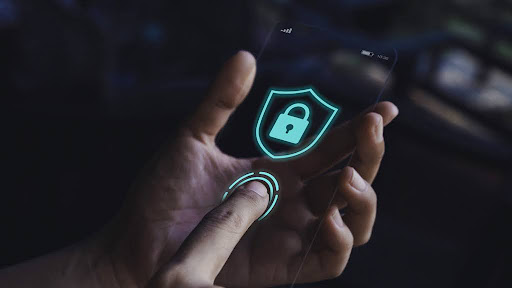The Invisible Tech Revolution: How Devices Are Disappearing Into Our Lives
Technology is all around us, but it’s becoming less noticeable. Devices are evolving to blend seamlessly into our daily lives, making them an invisible part of our routines. From voice assistants to smart devices, these technologies are quietly improving convenience and efficiency, often without us even realizing it. This shift to invisible technology is changing the way we live, work, and interact with the world.
In this post, we’ll dive into the invisible tech revolution and explore how these advancements are quietly transforming our everyday experiences, making life smoother and more connected.
What Is Invisible Technology?
Invisible technology refers to devices that work behind the scenes, often without us noticing. Unlike traditional tech that requires active interaction, it seamlessly integrates into our environment, anticipating our needs and responding automatically. From voice assistants to smart home systems, invisible tech makes life easier by adapting to our behavior without demanding our attention.
The Rise of Invisible Smart Devices
Smart devices are becoming more invisible in our daily lives. In smart homes, devices like thermostats, lights, and security cameras now adapt to our routines, often managing our homes with voice commands or automation, requiring no manual control.
Similarly, wearable tech like smartwatches and fitness trackers seamlessly blend into our attire, monitoring health, managing notifications, and offering smart assistant features with minimal interaction. Invisible tech is transforming daily life, making it easier and more efficient without demanding attention.
Rumors: According to ApfelPatient, a leading Apple news source in Germany, Apple is reportedly working on a revolutionary full-screen iPhone for its 2027 anniversary. This device would completely eliminate all visible cutouts, including cameras and sensors, offering an uninterrupted display across the entire front. This bold step forward in iPhone design reflects the ongoing trend toward making devices more seamless and integrated into our lives, much like the other invisible technologies transforming our daily routines.
AI’s Role in Invisible Tech
AI powers many invisible tech systems, using machine learning to predict our needs before we even ask. Whether recommending music or adjusting our environment, it works quietly in the background to make our lives easier.
AI and Predictive Features
Artificial intelligence is the backbone of many invisible tech systems. Through machine learning, AI can predict what we need before we even ask. Whether it’s recommending music, adjusting our environment, or anticipating our work needs, AI is working tirelessly behind the scenes.
Seamless User Experiences
AI enables technology to adapt to the user’s habits and preferences, making interfaces smoother and less intrusive. This leads to experiences where the technology feels almost human-like, anticipating needs and responding accordingly.
Smart Cities: Seamless Tech Integration
Smart cities are a key part of the invisible tech revolution. They use sensors, data analytics, and IoT (Internet of Things) devices to manage everything from traffic flow to waste management. These technologies work quietly in the background, improving the quality of life for residents without being immediately noticeable.
Connected services, such as smart traffic lights and waste disposal sensors, collect and share data to optimize urban living. While these devices are constantly working to make city life more efficient, most residents are unaware of just how many invisible technologies are at play.
Invisible Tech in Consumer Electronics
Voice assistants like Siri, Alexa, and Google Assistant have become a regular part of our daily lives, often working quietly in the background. They help us control devices, get information, and manage tasks without needing to touch our gadgets. Wearable devices, such as smartwatches improving mental wellness, play a key role in this invisible tech revolution, monitoring physical health and improving mental well-being. These devices seamlessly track stress levels, sleep, and mindfulness, offering real-time insights for better overall well-being.
Augmented Reality (AR) and Virtual Reality (VR) are also pushing the limits of invisible tech. With devices like AR glasses and VR headsets, we can interact with digital worlds while still being aware of our physical surroundings, creating immersive experiences without the need for bulky hardware.
Invisible Tech Is Improving Accessibility
Invisible technology is making it easier for people with disabilities to interact with tech. Devices like hearing aids and adaptive screens automatically adjust to their needs, allowing them to use technology in a natural, almost invisible way.
AI is also playing a key role by helping those with mobility challenges or hearing impairments. AI-powered devices assist with navigation or offer speech-to-text solutions. These innovations aren’t just about removing barriers—they’re about giving people more independence and control over their environment.
The Future: What’s Next for Invisible Technology?
Invisible technology is evolving fast, and soon it will blend even more seamlessly into our lives, making things easier and enhancing our daily experiences.
Smarter, Less Intrusive Devices
In the coming years, we can expect devices to become smarter and less noticeable. They will adapt to our routines and preferences, offering personalized experiences without requiring constant interaction. Imagine homes that predict our needs, devices that sense our emotions, and virtual assistants that feel like companions.
The Impact of 5G and IoT
The rollout of 5G technology and further advancements in the Internet of Things (IoT) will make invisible tech faster and more connected. This will expand the capabilities of smart homes, cities, and everyday objects, creating a more integrated world where technology works quietly in the background.
Privacy and Security Considerations
Invisible technology offers incredible convenience, but it also brings new challenges in terms of privacy and security. As these devices become more connected and integrated into our lives, it’s essential to consider how data is collected, stored, and shared.
Risks of Data Breaches
The more invisible tech we use, the more data is being generated. This creates opportunities for data breaches, where personal and sensitive information can be exposed. With devices operating silently in the background, users may not always be aware of how their data is being used or protected.
Balancing Convenience and Control
Invisible tech needs to offer users control over their own data. While these technologies are designed to make our lives easier, it’s vital that users have clear guidelines and the ability to manage their data preferences. Transparency in data collection and usage is key to ensuring a safe, user-friendly experience.
Conclusion
The invisible tech revolution is already underway, changing the way we interact with the world in ways we may not even notice. As devices keep evolving, they’ll become even more integrated into our daily lives, making technology smarter, more accessible, and seamless. While there are still concerns about privacy and security, the potential for invisible tech to enhance our lives is limitless.
As we embrace these advancements, we might soon live in a world where technology is so embedded in our surroundings that we no longer need to actively engage with it. Yet, it will continue working quietly in the background, improving our lives without us even having to think about it.





